Potrebujeme váš súhlas na využitie jednotlivých dát, aby sa vám okrem iného mohli ukazovať informácie týkajúce sa vašich záujmov. Súhlas udelíte kliknutím na tlačidlo „OK“.
ASTM D4318-10e1
Standard Test Methods for Liquid Limit, Plastic Limit, and Plasticity Index of Soils (Includes all amendments And changes 7/19/2017).
Automaticky preložený názov:
Štandardné skúšobné metódy pre Liquid Limit, Limitné plastická a plasticity Index pôd
NORMA vydaná dňa 15.1.2010
Informácie o norme:
Označenie normy: ASTM D4318-10e1
Poznámka: NEPLATNÁ
Dátum vydania normy: 15.1.2010
Kód tovaru: NS-26827
Počet strán: 16
Približná hmotnosť: 48 g (0.11 libier)
Krajina: Americká technická norma
Kategória: Technické normy ASTM
Kategórie - podobné normy:
Zemní práce. Hloubicí práce. Budování základů. Podzemní práce
Anotácia textu normy ASTM D4318-10e1 :
Keywords:
activity, Atterberg limits, liquid limit, plasticity index, plastic limit, ICS Number Code 93.020 (Earth works. Excavations. Foundation construction. Underground works)
Doplňujúce informácie
| Significance and Use | ||||||||||||||||||||||||||||||
|
These test methods are used as an integral part of several engineering classification systems to characterize the fine-grained fractions of soils (see Practices D2487 and D3282) and to specify the fine-grained fraction of construction materials (see Specification D1241). The liquid limit, plastic limit, and plasticity index of soils are also used extensively, either individually or together, with other soil properties to correlate with engineering behavior such as compressibility, hydraulic conductivity (permeability), compactibility, shrink-swell, and shear strength. The liquid and plastic limits of a soil and its water content can be used to express its relative consistency or liquidity index. In addition, the plasticity index and the percentage finer than 2-μm particle size can be used to determine its activity number. These methods are sometimes used to evaluate the weathering characteristics of clay-shale materials. When subjected to repeated wetting and drying cycles, the liquid limits of these materials tend to increase. The amount of increase is considered to be a measure of a shale's susceptibility to weathering. The liquid limit of a soil containing substantial amounts of organic matter decreases dramatically when the soil is oven-dried before testing. Comparison of the liquid limit of a sample before and after oven-drying can therefore be used as a qualitative measure of organic matter content of a soil (see Practice D2487. Note 1—The quality of the result produced by this standard is dependent on the competence of the personnel performing it and the suitability of the equipment and facilities used. Agencies that meet the criteria of Practice D3740, generally, are considered capable of competent and objective testing/sampling/inspection/etc. Users of this standard are cautioned that compliance with Practice D3740 does not in itself assure reliable results. Reliable results depend on many factors; Practice D3740 provides a means of evaluating some of those factors. |
||||||||||||||||||||||||||||||
| 1. Scope | ||||||||||||||||||||||||||||||
|
1.1 These test methods cover the determination of the liquid limit, plastic limit, and the plasticity index of soils as defined in Section 3 on Terminology. 1.2 Two methods for preparing test specimens are provided as follows: Wet preparation method, as described in 10.1. Dry preparation method, as described in 10.2. The method to be used shall be specified by the requesting authority. If no method is specified, use the wet preparation method. 1.2.1 The liquid and plastic limits of many soils that have been allowed to dry before testing may be considerably different from values obtained on non-dried samples. If the liquid and plastic limits of soils are used to correlate or estimate the engineering behavior of soils in their natural moist state, samples should not be permitted to dry before testing unless data on dried samples are specifically desired. 1.3 Two methods for determining the liquid limit are provided as follows: Method A, Multipoint test as described in Sections 11 and 12. Method B, One-point test as described in Sections 13 and 14. The method to be used shall be specified by the requesting authority. If no method is specified, use Method A. 1.3.1 The multipoint liquid limit method is generally more precise than the one-point method. It is recommended that the multipoint method be used in cases where test results may be subject to dispute, or where greater precision is required. 1.3.2 Because the one-point method requires the operator to judge when the test specimen is approximately at its liquid limit, it is particularly not recommended for use by inexperienced operators. 1.3.3 The correlation on which the calculations of the one-point method are based may not be valid for certain soils, such as organic soils or soils from a marine environment. It is strongly recommended that the liquid limit of these soils be determined by the multipoint method. 1.4 The plastic limit test is performed on material prepared for the liquid limit test. 1.5 The liquid limit and plastic limit of soils (along with the shrinkage limit) are often collectively referred to as the Atterberg limits. These limits distinguished the boundaries of the several consistency states of plastic soils. 1.6 The composition and concentration of soluble salts in a soil affect the values of the liquid and plastic limits as well as the water content values of soils (see Method D4542). Special consideration should therefore be given to soils from a marine environment or other sources where high soluble salt concentrations may be present. The degree to which the salts present in these soils are diluted or concentrated must be given careful consideration. 1.7 The methods described herein are performed only on that portion of a soil that passes the 425-μm (No. 40) sieve. Therefore, the relative contribution of this portion of the soil to the properties of the sample as a whole must be considered when using these tests to evaluate properties of a soil. 1.8 The values stated in SI units are to be regarded as the standard, except as noted below. The values given in parentheses are for information only. 1.8.1 The standard units for the resilience tester covered in Annex A1 are inch-pound, not SI. The SI values given are for information only. 1.9 All observed and calculated values shall conform to the guidelines for significant digits and rounding established in Practice D6026. 1.9.1 For purposes of comparing a measured or calculated value(s) with specified limits, the measured or calculated value(s) shall be rounded to the nearest decimal or significant digits in the specified limits 1.9.2 The procedures used to specify how data are collected/recorded or calculated, in this standard are regarded as the industry standard. In addition, they are representative of the significant digits that generally should be retained. The procedures do not consider material variation, purpose for obtaining the data, special purpose studies, or any considerations for the user’s objectives; and it is common practice to increase or reduce significant digits of reported data to be commensurate with these considerations. It is beyond the scope of this standard to consider significant digits used in analysis methods for engineering design. 1.10 This standard does not purport to address all of the safety concerns, if any, associated with its use. It is the responsibility of the user of this standard to establish appropriate safety and health practices and determine the applicability of regulatory limitations prior to use. |
||||||||||||||||||||||||||||||
| 2. Referenced Documents | ||||||||||||||||||||||||||||||
|
Podobné normy:
Historická
1.10.2009
Historická
1.7.2014
Historická
1.1.2008
Historická
1.7.2012
Historická
1.11.2013
Historická
15.1.2013
Odporúčame:
Aktualizácia technických noriem
Chcete mať istotu, že používate len platné technické normy?
Ponúkame Vám riešenie, ktoré Vám zaistí mesačný prehľad o aktuálnosti noriem, ktoré používate.
Chcete vedieť viac informácií ? Pozrite sa na túto stránku.


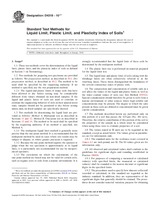
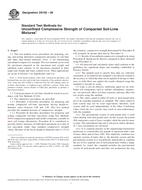 ASTM D5102-09
ASTM D5102-09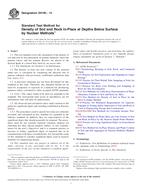 ASTM D5195-14
ASTM D5195-14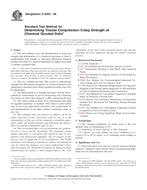 ASTM D5202-08
ASTM D5202-08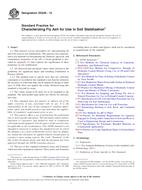 ASTM D5239-12
ASTM D5239-12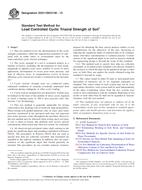 ASTM D5311/D5311M-13..
ASTM D5311/D5311M-13..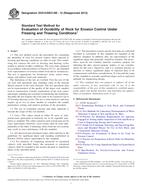 ASTM D5312/D5312M-12..
ASTM D5312/D5312M-12..
 Cookies
Cookies
